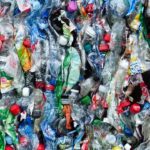By 2030, the demand for primary resources will have decreased by 50% and by 2050, the economy will be nearly circular. The contribution of chemistry to these missions is vital and has already started.
We need to switch from the earth-exhausting linear economy with “resources-products-waste” as its key characteristic towards the circular economy. The latter focuses on making the smallest possible ecological footprint, which requires a fundamental system transition with considerable challenges for companies, consumers and government bodies. How will the chemistry sector contribute to this?
In the final situation, the chemical industry will produce as much as possible based on sustainable energy and sustainable resources, such as biomaterials and renewable materials, but also through the processing of CO2 into new chemical building blocks. Chemistry will create new materials with new sustainable properties, such as repairability and reuse. New substances and materials will not or scarcely contain any environmental pollutants. Chemistry will set up the production processes in such a way that various materials can be recognised in mixed end-of-life flows, separated and processed into new materials and products.
Agreements will be reached with industrial purchasers about circular product specifications and certification of substances and semi-finished goods. This will be done to ensure that materials and products are reused as much as possible and also to cultivate users’ and consumers’ trust in and acceptance of new circular products and services.
Many chemical innovations are already taking place that will lead to a smaller ecological footprint of both chemistry and the purchasing industrial sectors. For example, Ioniqa in Eindhoven has developed a technology that uses a chemical process to convert coloured plastic into pure polymer building blocks. These can be transformed into sustainable PET plastic for the production of sustainable packaging of soft drinks, for example.
Black Bear Carbon in Nederweert removes the black pigment (“carbon black”) from old tyres, rubber shoe soles, glasses, shoe polish, paint and coatings, et cetera by means of heating (pyrolysis) and recycles the pigment.
Leadax in Wapenveld replaces lead by converting the polymer PVB from car windows into a polymer laminate with strengthened aluminium that has the same properties as traditional lead.
Morssinkhof Rymoplast is building a factory in Heerenveen to process plastics from consumer waste into new resources for high-quality applications.
Many other initiatives can be named in chemistry, such as waste-to-chemistry and a system for recycling diapers.
Download the KIA ‘Circulaire Economie’




